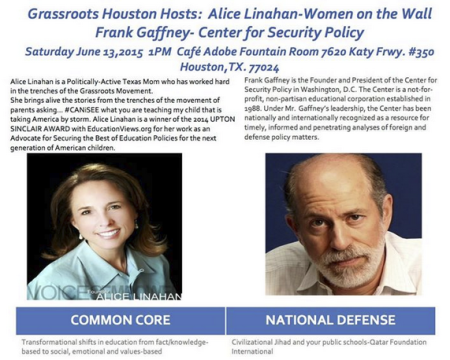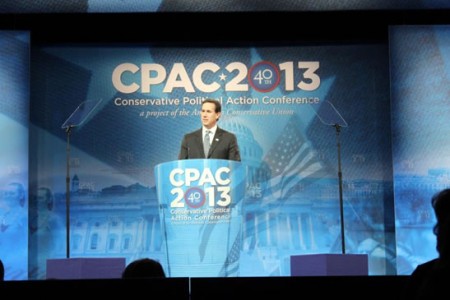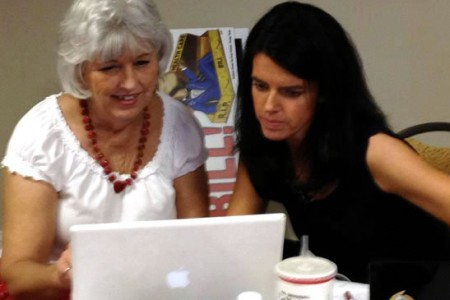Why Texas Legislators Keep Getting Education Wrong~ CHOICE IS NOW NO CHOICE!
Did you know….
When you take the money strings are attached!!
REALITY CHECK for all those who think choice and competition are the answer to fixing education, without addressing reality on the ground and what is being taught in all schools, PUBLIC, PRIVATE and CHARTER. We need to talk about REALITY!
SCHOOL CHOICE MUST BE DEFINED– “School Choice” is the right of a mother, a father or a guardian to choose what the best education option there is for a child in their local community. As I have said many times, what that looks like in my local community is completely different than what it looks like in Alpine, Texas or inner city Houston or Dallas.
Just to say “school choice and competition,” this will not work. How is it defined and what is the reality on the ground because of legislation that has foolishly been passed already and how does that affect what is being taught in classrooms today?
Choice has become NO CHOICE because all schools are using the Common Core philosophy of education – Public, Private, and Charter. This is because the Texas Legislature passed SB6 in 2011 which opened up pandora’s box. All the instructional materials and textbooks can be aligned with the Common Core [and a large percentage of it is].
As Robin Eubanks, author of Credentialed to destroy, has stated “Common Core is really just a ruse to jettison the traditional role of high school and force the School to Work vision that was so controversial in the 90s.”
[Type #1 vs. Type #2 philosophies of education – chart — http://www.educationviews.org/comparison-types-education-type-1-traditional-vs-type-2-cscope-common-core/ ]
Just as the Texas Legislature was passing HB462 that said “NO” to the mandate of Common Core National Standards for Texas public school districts, the Legislature was also passing HB5.
[HB 5 was authored by Reps. Aycock, Deshotel, John Davis, Villarreal, Callegari and was passed with 147 Yeas, 0 Nays, 1 absent excused and 1 absent. It was sponsored in the Senate by Sen. Dan Patrick, co-sponsored by Schwertner, and was passed with 31 Yeas and 0 Nays. Gov. Perry signed HB 5 into law on 6.10.13. Please read “For the Historical Record: Texas Will Rue This Day” – 6.17.15 — by Donna Garner — http://educationviews.org/for-the-historical-record-texas-will-rue-this-day/ ]
HB 5 set up the School To Work/Workforce Development model of education in full force in Texas!
Texas Legislators also passed SB 6, which changed what the “Permanent Education Fund (PEF) could be used for and the funding mechanisms to purchase “Instructional Materials”. The Instructional Materials Allotment (IMA) is given to each local school district, open-enrollment charter school, and Juvenile Justice Alternative Education Program (JJAEP). Now school districts can use their IMAs to purchase instructional materials as well as technological equipment, such as laptops and tablets, to included curriculum management systems such as CSCOPE now renamed TEKS Resource Services. They can now also use their allotment to pay for professional development and training in the use of this technology. It is not a coincidence that Thomas Ratliff an illegal SBOE (State Board of Education) member and paid lobbyist actually testified in favor of SB6.
[The SB 6 Conference Committee Report was passed on 6.27.11 with 143 Yeas, 1 present not voting. Gov. Perry signed SB 6 into law on 7.19.11 — http://www.journals.house.state.tx.us/hjrnl/821/pdf/82C1DAY15FINAL.PDF#page=16 .]
When you couple SB6, HB5 and HB2103 you have a data collection currency for the state which sets up cooperating agencies including the Texas Education Agency (TEA), the Texas Higher Education Coordinating Board (THECB), and the Texas Workforce Commission (TWC) that will have access to our children and their teachers personal data without consent because Obama changed the regulations on (FERPA) making it legal for personal data to be collected without consent in the name of “education research”.
Three centers for education research (CER’s) will be set up to conduct research using the data from the TEA, THECB, and TWC that goes back at least 20 years.
The data will be known as the P-20/Workforce Data Repository and will be operated by the Higher Education Coordinating Board.
The Texas Higher Education Coordinating Board will establish three centers for education research (CER’s) to conduct studies and share education data, including college admission tests and data from the National Student Clearinghouse.
[HB 2103 was authored by Reps. Villarreal and Branch, sponsored by Sen. Seliger, passed in the Senate with a voice vote of 31 – 0 on 5.15.13 and in the House on 4.15.13 with 130 Yeas, 1 Nays, 1 present not voting.
HB 2103 was passed into law by Gov. Perry on 6.14.13 — http://www.capitol.state.tx.us/BillLookup/History.aspx?LegSess=83R&Bill=HB2103.
Please read “Open Letter to Gov. Rick Perry: Please Veto HB 2103” – by Donna Garner – 5.31.13 —http://educationviews.org/gov-perry-please-veto-hb-2103-sharing-of-private-info/ ]
Interesting to note Abbott’s appointments to the “UT Board of Regents announced on Thursday is Sara Martinez Tucker, the CEO of the National Math and Science Initiative. Writing in US News and World Report in February of 2014, she praised the controversial Common Core initiative being promoted by the Obama Administration.
Sara Martinez Tucker-
“We should move the discussion to ‘how’ Common Core will be implemented – not ‘if’ Common Core should be implemented,” she wrote.”
Did you know~ via Robin Eubanks, author of Credentialed to Destroy
“The language from the ESEA (Elementary and Secondary Education Act) rewrite on closing the achievement gaps between groups that objectively have had very different life experiences basically limits what can now go on in a K-12 classroom in any state or locality. Some local control, huh? Interestingly the only kind of education that will now suffice is precisely the same as what political and social transformationalists intent on social justice also want. It’s the same kind of K-12 education that members of the Chamber of Commerce also endorse since it makes genuine, shift the paradigm invention and technology far less likely.”
Are you really okay with the Federal Government in bed with State Government managing the Talent Pipeline? Basically our children are human capital for those in power. Here is a report prepared by the US Chamber of Commerce for a November 19, 2014 national conference in DC to sell its “New Approach to Managing the Skills Gap.” The idea is to partner with “employers in regions and communities across the country to advance talent supply chain solutions.” Employers are now to be treated as the end-customer of the K-12 and higher education systems. That document calls on employers to take the initiative in “championing a new vision for employer engagement with education and workforce systems.”
(a) The mission of the public education system of this state is to ensure that all Texas children have access to a quality education that enables them to achieve their potential and fully participate now and in the future in the social, economic, and educational opportunities of our state and nation. That mission is grounded on the conviction that a general diffusion of knowledge is essential for the welfare of this state and for the preservation of the liberties and rights of citizens. It is further grounded on the conviction that a successful public education system is directly related to a strong, dedicated, and supportive family and that parental involvement in the school is essential for the maximum educational achievement of a child.
- #CanISee™© WHAT you are teaching my child?
- #CanISee™© HOW you are teaching my child?
- #CanISee™© WHO is benefiting financially from the curriculum on which my child’s teacher is being evaluated?
DOCUMENTATION FROM THE TEXAS EDUCATION CODE
The elected members of the Texas State Board of Education have authority over the adoption of Texas curriculum requirements (TEKS); and the TEKS are mandated by law to be taught in Texas public schools, including in AP and IB classes. On 9.22.14, the SBOE reiterated the law by passing an amendment:
Wording of SBOE Amendment:
“To approve for first reading and filing authorization the proposed amendments to 19 TAC Chapter 113 Texas Essential Knowledge and Skills for Social Studies, Subchapter D, Other Social Studies Courses, so as to require that AP and IB social studies courses address the TEKS, as applicable, specifically as set out in Attachment II (on p. I-43 of agenda).” —“Momentous SBOE Votes: Patriotism Protected for America’s Students” – by Donna Garner — http://www.educationviews.org/momentous-sboe-votes-patriotism-protected-americas-students/
=======
Texas Education Code – http://www.statutes.legis.state.tx.us/?link=ED
TEC Title 2., Subtitle F, Chapt. 31, Subchapter A, Sec. 31.004:
Sec. 31.004. CERTIFICATION OF PROVISION OF INSTRUCTIONAL MATERIALS. (a) Each school district and open-enrollment charter school shall annually certify to the State Board of Education and the commissioner that, for each subject in the required curriculum under Section 28.002, other than physical education, and each grade level, the district provides each student with instructional materials that cover all elements of the essential knowledge and skills adopted by the State Board of Education for that subject and grade level.
=======
Texas Education Code — http://www.statutes.legis.state.tx.us/Docs/ED/htm/ED.7.htm – Subchapter D, Sec. 7.102:
Sec. 7.102. STATE BOARD OF EDUCATION POWERS AND DUTIES. (a) The board may perform only those duties relating to school districts or regional education service centers assigned to the board by the constitution of this state or by this subchapter or another provision of this code.
(4) The board shall establish curriculum and graduation requirements.
(5) The board shall establish a standard of performance considered satisfactory on student assessment instruments.
(11) The board shall adopt rules to carry out the curriculum required or authorized under Section 28.002.
(30) The board shall perform duties in connection with the Foundation School Program as prescribed by Chapter 42.
(d) The board may adopt rules relating to school districts or regional education service centers only as required to carry out the specific duties assigned to the board by the constitution or under Subsection (c).
=========
Texas Education Code — http://www.statutes.legis.state.tx.us/?link=ED – Title 2, Subtitle F, Chapt. 28, Subchapter A, Sec. 28.001:
Sec. 28.001. PURPOSE. It is the intent of the legislature that the essential knowledge and skills developed by the State Board of Education under this subchapter shall require all students to demonstrate the knowledge and skills necessary to read, write, compute, problem solve, think critically, apply technology, and communicate across all subject areas. The essential knowledge and skills shall also prepare and enable all students to continue to learn in postsecondary educational, training, or employment settings.
Sec. 28.002. REQUIRED CURRICULUM. (a) Each school district that offers kindergarten through grade 12 shall offer, as a required curriculum:
(1) a foundation curriculum that includes:
(A) English language arts;
(B) mathematics;
(C) science; and
(D) social studies, consisting of Texas, United States, and world history, government, economics, with emphasis on the free enterprise system and its benefits, and geography; and
(2) an enrichment curriculum that includes:
(A) to the extent possible, languages other than English;
(B) health, with emphasis on the importance of proper nutrition and exercise;
(C) physical education;
(D) fine arts;
(E) career and technology education;
(F) technology applications;
(G) religious literature, including the Hebrew Scriptures (Old Testament) and New Testament, and its impact on history and literature; and
(H) personal financial literacy…
(b) The State Board of Education by rule shall designate subjects constituting a well-balanced curriculum to be offered by a school district that does not offer kindergarten through grade 12.
(b-1) In this section, “common core state standards” means the national curriculum standards developed by the Common Core State Standards Initiative.
(b-2) The State Board of Education may not adopt common core state standards to comply with a duty imposed under this chapter.
(b-3) A school district may not use common core state standards to comply with the requirement to provide instruction in the essential knowledge and skills at appropriate grade levels under Subsection (c).
(b-4) Notwithstanding any other provision of this code, a school district or open-enrollment charter school may not be required to offer any aspect of a common core state standards curriculum…
(c) The State Board of Education, with the direct participation of educators, parents, business and industry representatives, and employers shall by rule identify the essential knowledge and skills of each subject of the required curriculum that all students should be able to demonstrate and that will be used in evaluating instructional materials under Chapter 31 and addressed on the assessment instruments required under Subchapter B, Chapter 39. As a condition of accreditation, the board shall require each district to provide instruction in the essential knowledge and skills at appropriate grade levels and to make available to each high school student in the district an Algebra II course…
(f) A school district may offer courses for local credit in addition to those in the required curriculum. The State Board of Education shall be flexible in approving a course for credit for high school graduation under this subsection.
(g) A local instructional plan may draw on state curriculum frameworks and program standards as appropriate. Each district is encouraged to exceed minimum requirements of law and State Board of Education rule. Each district shall ensure that all children in the district participate actively in a balanced curriculum designed to meet individual needs. Before the adoption of a major curriculum initiative, including the use of a curriculum management system, a district must use a process that:
(1) includes teacher input;
(2) provides district employees with the opportunity to express opinions regarding the initiative; and
(3) includes a meeting of the board of trustees of the district at which:
(A) information regarding the initiative is presented, including the cost of the initiative and any alternatives that were considered; and
(B) members of the public and district employees are given the opportunity to comment regarding the initiative…
(h) The State Board of Education and each school district shall foster the continuation of the tradition of teaching United States and Texas history and the free enterprise system in regular subject matter and in reading courses and in the adoption of instructional materials. A primary purpose of the public school curriculum is to prepare thoughtful, active citizens who understand the importance of patriotism and can function productively in a free enterprise society with appreciation for the basic democratic values of our state and national heritage.
(i) The State Board of Education shall adopt rules for the implementation of this subchapter. Except as provided by Subsection (j), the board may not adopt rules that designate the methodology used by a teacher or the time spent by a teacher or a student on a particular task or subject.
========
Texas Education Code — http://www.statutes.legis.state.tx.us/Docs/ED/htm/ED.31.htm#31.022 –
Title 2, Subtitle F, Chapt. 31, Subchapter A, Sec. 31.023:
Sec. 31.023. INSTRUCTIONAL MATERIAL LIST. (a) For each subject and grade level, the State Board of Education shall adopt a list of instructional materials. The list includes each instructional material submitted for the subject and grade level that meets applicable physical specifications adopted by the State Board of Education andcontains material covering at least half of the elements of the essential knowledge and skills of the subject and grade level in the student version of the instructional material, as well as in the teacher version of the instructional material, as determined by the State Board of Education under Section 28.002 and adopted under Section 31.024.
(a-1) The State Board of Education shall determine the percentage of the elements of the essential knowledge and skills of the subject and grade level covered by each instructional material submitted. The board’s determination under this subsection is final.
(b) Each instructional material on the list must be free from factual errors.
==========
Sec. 31.024. ADOPTION BY STATE BOARD OF EDUCATION. (a) By majority vote, the State Board of Education shall:
(1) place each submitted instructional material on the list adopted under Section 31.023; or
(2) reject instructional material submitted for placement on that list.
(b) Not later than December 1 of the year preceding the school year for which the instructional materials for a particular subject and grade level will be purchased under the cycle adopted by the board under Section 31.022, the board shall provide the list of adopted instructional materials to each school district.











